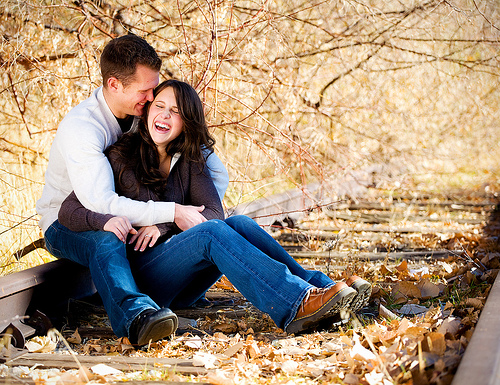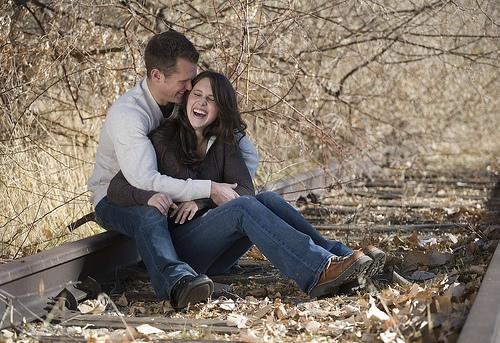November 26th, 2007
I Bought This Expensive Camera, But My Pictures Look BLAH!
“I bought this expensive camera, but my pictures look Blah!” I have heard a variation of this expression many times. It usually comes from people who have recently upgraded to a digital SLR camera. With Christmas coming and many more photographers hoping to find a box of Digital SLR goodness under a tree, let me state my opinion on this subject as a cold, hard fact:
If you use a digital SLR camera, your images WILL require editing!
Unlike their inexpensive point-and-shoot cousins, digital SLR cameras are aimed at the more experienced photographer. These shooters are the type that don’t want the camera to do all the thinking for them. The camera’s job is to record the scene accurately at a high level of quality. It is essentially creating a digital negative which then needs to be developed.
Here is the unedited file* straight from the camera of today’s photo of a newlywed couple on railroad tracks.
Notice how blah the file is. The colors are drab, the contrast is low, the whole scene is rather dark and unsharp. In keeping with the film vernacular, this file is my “digital negative”. Like any negative, it needs developing. Today, we do this in our digital darkroom – photo editing software.
For my stock portfolio images, I do the bare minimum of editing. This is done intentionally to leave the final editing to the buyer, usually a graphic designer. But even my bare minimum consists of several steps.
– Cropping (if necessary)
– Adjusting exposure (I shoot at -1/3 f/stop to preserve highlights)
– Tightening Levels
– Adjusting Vibrance and Saturation
– Sharpening (using the High Pass Filter method)
For portrait and client work, I do much more editing. This includes:
– re-touching
– softening
– saturation
– color adjustment
– dodging & burning
– vignetting
and so on…
Some of this work is done with Photoshop actions (it is no secret that I am a big fan of Kenneth Linge’s actions). I would never want a client to receive an image that I have not edited – period.
If you are shooting a digital SLR, think of it this way: You capture the image with the camera, you develop the image with the software. A little bit of work with an editing program goes a long way in removing the BLAH.
Canon 5D, Canon 70-200 f/4L lens – 1/1000 second, f/4, ISO 160
* – This image was shot in RAW mode and converted to JPG with Adobe Camera Raw (added 11/29/07)
Labels: tutorial







